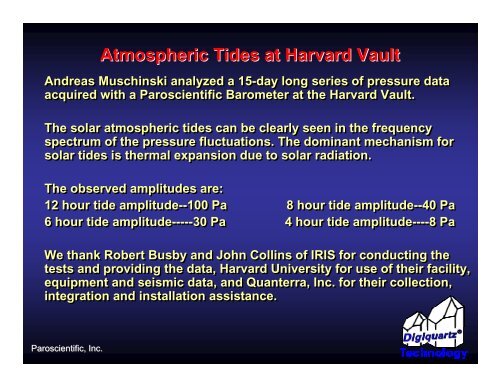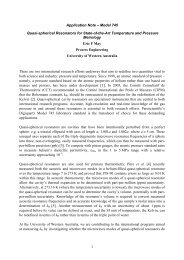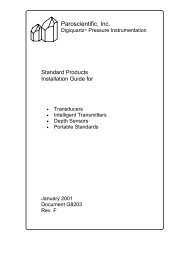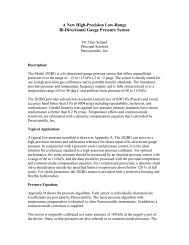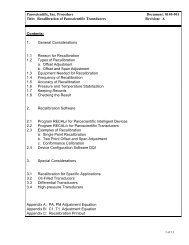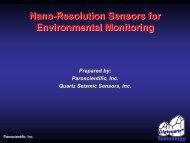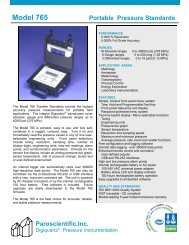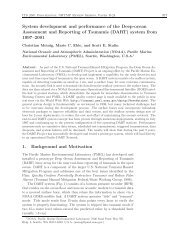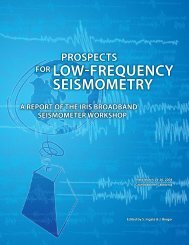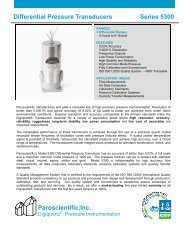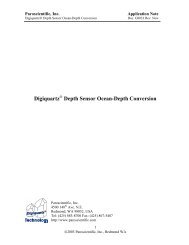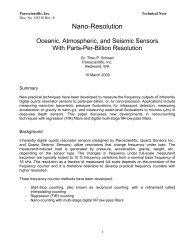Solar-driven Atmospheric Tides - Paroscientific, Inc.
Solar-driven Atmospheric Tides - Paroscientific, Inc.
Solar-driven Atmospheric Tides - Paroscientific, Inc.
You also want an ePaper? Increase the reach of your titles
YUMPU automatically turns print PDFs into web optimized ePapers that Google loves.
Year-long <strong>Atmospheric</strong> <strong>Tides</strong> at AlbuquerqueAndreas Muschinski made a preliminary analysis of the GSN AMN0 (Albuquerque) pressure timeseries compiled by Tim Ahern and Rick Benson. The dataset, collected with a <strong>Paroscientific</strong>broadband barometer, contains about 200 million one-second samples of surface barometricpressure covering the 6-year period from January 2002 through April 2007. This first preliminaryanalysis considered the first 365 days from the second file with 31.5 million one-second samples(data points). A sequence of 52,560 (365 x 86,400/600) ten-minute averages (averages over 600subsequent samples) and resulting periodogram were computed.The solar tides reflect the Fourier components of the daily pressure signals associated with thedaily temperature signals. The (solar) diurnal tide, the semidiurnal tide, the 8-h (1/3 day) tide, the6-h (1/4 day) tide, and all the higher harmonics up to the 206-min tide (1/7 day) are resolved withan unprecedented signal-to-noise ratio. Also the 160-min tide (1/9 day) is visible. An estimate of 5Pa (!) for the amplitude of the 6-h (1/4 day) tide was obtained. The amplitudes of the higherharmonics are even smaller.Installation of state-of-the-art, broadband barometers on the EarthScope grid would dramaticallyimprove our ability to monitor atmospheric tides and their seasonal variability, annual cycle, andpossible long-term trends on regional and global scales. The resulting database would open newavenues for basic and applied research and would be useful for the improvement of numericalweather prediction (NWP) models, global circulation models (GCMs), andclimate system models (CSMs).<strong>Paroscientific</strong>, <strong>Inc</strong>.
<strong>Paroscientific</strong>, <strong>Inc</strong>.We thank David Simpson, Tim Ahern, Rick Benson, RickAster, and their colleagues at IRIS, GSN, PASSCAL, andDMC for providing the data and format analysis techniques


